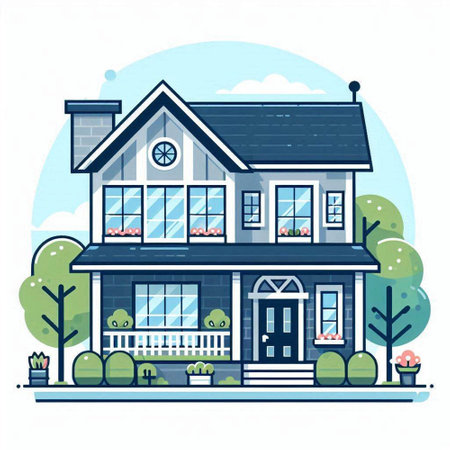1. Set Your Budget and Timeline
Before you pick out tiles or start browsing cabinet styles, its essential to figure out your budget and timeline. Kitchen renovations can vary widely in cost, so the first step is to determine how much youre comfortable spending. A clear budget helps you make smarter choices and avoid overspending.
How Much Should You Spend?
A good rule of thumb is to invest between 5% to 15% of your homes current value into your kitchen remodel. For example, if your home is worth $400,000, a typical kitchen renovation might range from $20,000 to $60,000 depending on the scope.
Sample Budget Breakdown
| Category | Percentage of Budget |
|---|---|
| Cabinetry & Hardware | 30% |
| Installation | 17% |
| Appliances | 14% |
| Countertops | 10% |
| Flooring | 7% |
| Lighting | 5% |
| Walls & Ceilings (Paint, Drywall) | 5% |
| Design Fees | 4% |
| Plumbing | 4% |
| Total | 100% |
Create a Realistic Timeline
The average kitchen remodel takes about 6 to 12 weeks once construction begins. However, planning, designing, and ordering materials can take several additional weeks or even months. Be sure to factor in:
- Planning & Design: 2–4 weeks
- Ordering Materials: 4–8 weeks (especially for custom cabinets or imported items)
- Demolition & Prep: 1–2 weeks
- Main Construction: 4–8 weeks
Add a Contingency Fund
No matter how well you plan, surprises can pop up—like outdated wiring or water damage behind the walls. Its smart to set aside an extra 10% to 20% of your total budget for unexpected costs. This helps keep your project on track without financial stress.
Pro Tip:
If youre living in your home during the renovation, consider setting up a temporary kitchen with a microwave, mini fridge, and essentials. It’ll save you money on eating out while keeping life manageable.
This first step lays the foundation for a smoother renovation process. With a realistic budget and timeline in place, youll be better prepared for the journey ahead.
2. Plan Your Layout and Design
Before you start tearing out cabinets or picking paint colors, its important to plan a kitchen layout that works for your daily routine. A smart design will not only make your space more functional but also more enjoyable to use. Here are some key things to consider when planning your kitchen layout and overall design style.
Think About Your Lifestyle
How do you use your kitchen? Are you an avid cook, a busy parent, or someone who loves entertaining guests? Your lifestyle plays a big role in shaping the perfect kitchen layout. For example, if you love cooking big meals, youll want plenty of prep space and easy access to appliances. If youre all about family time, an open-concept kitchen that flows into the living area might be ideal.
Understand the Work Triangle
The “work triangle” is a classic kitchen design principle that connects the stove, sink, and refrigerator—the three main work areas. Keeping these elements within a few steps of each other can improve efficiency and reduce unnecessary movement while cooking.
| Work Triangle Element | Purpose | Tips |
|---|---|---|
| Stove | Cooking center | Place near prep area and away from traffic zones |
| Sink | Cleaning station | Locate between fridge and stove for best flow |
| Refrigerator | Food storage | Easy access for both cooking and unloading groceries |
Choose a Kitchen Layout That Fits Your Space
Your available space will help determine which type of layout is best. Here are some popular options:
| Layout Type | Description | Best For |
|---|---|---|
| L-Shaped Kitchen | Counters on two adjacent walls forming an L shape | Open floor plans or small to medium kitchens |
| U-Shaped Kitchen | Counters on three walls forming a U shape | Larger kitchens with more storage needs |
| Galley Kitchen | Narrow corridor with counters on both sides | Small spaces or apartments with limited width |
| Island Kitchen | A central island offers extra workspace and seating | Open layouts with enough room to move around the island |
Open vs. Closed Concept Kitchens
This choice depends on how much interaction you want between your kitchen and other parts of the home.
| Concept Type | Pros | Cons |
|---|---|---|
| Open-Concept Kitchen | Makes the space feel larger, great for entertaining, allows communication with family/guests while cooking | Noisy, less wall space for cabinets, harder to hide messes |
| Closed Kitchen Layout | Keeps cooking messes contained, more wall space for cabinets and appliances, quieter environment for focused cooking | Might feel isolated from rest of home, less natural light depending on layout |
Add Storage Where You Need It Most
A well-planned kitchen layout includes smart storage solutions. Think about where you’ll keep pots and pans, pantry items, spices, and utensils. Consider adding pull-out drawers, lazy Susans in corner cabinets, overhead shelves, or even a walk-in pantry if space allows.
Quick Tips for Storage Planning:
- Add deep drawers under countertops for pots and pans.
- Use vertical dividers for baking sheets and cutting boards.
- LVP (Luxury Vinyl Plank): Affordable, waterproof, and easy to install.
- Ceramic or Porcelain Tile: Tough and water-resistant but can be cold underfoot.
- Engineered Hardwood: A great compromise between beauty and durability—more stable than solid wood in humid areas.
- Cork: Softer underfoot and eco-friendly but requires sealing.
- If your countertops are bold, go subtle with the backsplash—and vice versa.
- Ceramic tile is budget-friendly; glass tile adds shine; metal offers an industrial vibe.
- Pep up neutral designs with colorful grout or patterned tiles.
- Refrigerator: Select size and features based on family needs—French door models are trendy but require more space.
- Oven/Range: You’ll choose between gas, electric, or induction based on cooking preferences and hookups.
- Dishwasher: A quiet model is ideal for open-plan homes; consider energy efficiency ratings as well.
- Microwave: You can mount it over the range or integrate it into cabinetry for a cleaner look.
- Range Hood: A must-have if you cook frequently—it helps control odor, smoke, and grease buildup.
- Licenses: Make sure they have valid licenses for your state or city. This ensures they meet local building codes and regulations.
- References: Ask for at least three recent references and follow up with them. A good professional should have happy past clients.
- Reviews: Look up reviews on platforms like Yelp, Google, Houzz, or Angie’s List to see what others are saying about their work quality and professionalism.
- Portfolio: Review photos of past projects to ensure their style aligns with your vision.
- How many kitchen remodels have you completed?
- Can I see examples of similar projects youve worked on?
- What is your projected timeline for this project?
- Do you carry liability insurance and workers comp?
- Will you handle permits and inspections?
- Empty Cabinets and Drawers: Remove all kitchen items including food, dishes, and utensils.
- Protect Adjacent Rooms: Use plastic sheeting or zip walls to block off nearby spaces.
- Shut Off Utilities: Turn off water, gas, and electricity to avoid accidents during demo.
- Remove Appliances: Unplug and move appliances out of the way to a safe location.
- Create a Temporary Kitchen: Set up a small prep station in another room with essentials like a microwave, toaster oven, and mini fridge.

3. Choose Materials and Finishes
Once you’ve finalized your kitchen layout and budget, it’s time to select the materials and finishes that will bring your vision to life. This step is all about combining style with function. The choices you make here will not only impact the look of your kitchen but also how well it holds up over time.
Cabinetry
Cabinets are one of the most visible—and expensive—elements in your kitchen. Consider the material, door style, color, and finish. Think about whether you want stock cabinets, semi-custom, or fully custom options based on your budget and needs.
Popular Cabinet Styles
| Style | Description | Best For |
|---|---|---|
| Shaker | Clean lines, classic look with recessed panel doors | Traditional & Modern kitchens |
| Flat-Panel (Slab) | Sleek and simple design with no frames or panels | Contemporary & Minimalist kitchens |
| Beadboard | Decorative vertical planks with a cottage feel | Farmhouse & Coastal kitchens |
Countertops
Your countertop should match your lifestyle. Do you cook often? Then durability matters. Prefer easy maintenance? Some materials need more upkeep than others.
Common Countertop Options
| Material | Pros | Cons |
|---|---|---|
| Quartz | Durable, low maintenance, non-porous | Can be pricey; not heat-proof |
| Granite | Naturally beautiful and heat-resistant | Needs periodic sealing; heavy |
| Laminates | Budget-friendly and available in many styles | Less durable; can scratch or chip easily |
| Butcher Block | Warm, natural wood appearance; good for prep work | Needs regular sealing; can stain easily |
Flooring Options
The kitchen is a high-traffic area, so choose flooring that stands up to wear and tear. Look for something water-resistant, easy to clean, and comfortable underfoot.
Top Flooring Picks for Kitchens:
Backsplash Choices
Your backsplash protects walls from splashes while adding personality to the space. Subway tiles are a classic choice, but don’t be afraid to explore patterns like herringbone or mosaic for added flair.
Quick Tips:
Selecting Appliances
Your appliance choices should reflect both function and aesthetics. Stainless steel remains popular for its modern look and durability, but newer trends include matte black or custom panel-ready appliances that blend into cabinetry.
Main Appliances to Consider:
Selecting the right materials now will save you headaches later. Focus on durability where it counts—like countertops and flooring—and let your style shine through in elements like backsplashes and cabinet finishes.
4. Hire the Right Professionals
Once you have a clear vision for your kitchen renovation, its time to bring in the right experts to help turn that vision into reality. Choosing the right professionals can make all the difference in terms of quality, budget, and staying on schedule.
Identify Who You Need
Not every kitchen remodel requires the same set of professionals. Depending on the scope of your project, you may need one or more of the following:
| Professional | What They Do | When You Need Them |
|---|---|---|
| General Contractor | Manages the entire renovation, hires subcontractors, and ensures work is done on time and up to code. | For full remodels involving structural changes or multiple trades. |
| Interior Designer | Helps with layout planning, material selection, color schemes, and overall design aesthetics. | If youre looking for a cohesive and stylish design or need help with space planning. |
| Specialized Tradespeople (e.g., plumber, electrician, tile setter) | Perform specific tasks like wiring, plumbing, or flooring installation. | When you’re handling parts of the project yourself or working with a designer instead of a general contractor. |
Check Credentials and Experience
No matter who you hire, it’s crucial to verify their background. Here are some quick tips:
Questions to Ask Before Hiring
A short interview can reveal a lot about whether someone is the right fit. Here are some helpful questions to ask potential hires:
Dont Rush the Hiring Process
It might be tempting to go with the first person who gives you a good price or promises a quick turnaround—but don’t rush it. Take your time reviewing options so you can feel confident that youre hiring someone trustworthy and capable. A well-chosen team will save you time, stress, and money in the long run.
5. Get Permits and Prepare for Demo
Before you start tearing out cabinets or removing countertops, it’s important to make sure you’re following your local building codes. Depending on the scope of your kitchen renovation—especially if it involves electrical work, plumbing changes, or structural modifications—you may need one or more permits.
Check Permit Requirements
Contact your local city or county building department to find out exactly what permits are required for your renovation project. Each area has different rules, so don’t assume you can skip this step. Doing unpermitted work can cause issues when selling your home later or even lead to fines.
Common Permits You Might Need:
| Type of Work | Possible Required Permit |
|---|---|
| Electrical rewiring | Electrical Permit |
| Plumbing updates | Plumbing Permit |
| Wall removal or layout changes | Building/Structural Permit |
| New appliance installation (e.g., gas stove) | Mechanical/Gas Permit |
Prep Your Kitchen for Demolition
Once your permits are in place, its time to get your home ready for demo day. This step is all about clearing the space and protecting other areas of your house from dust and debris.
Steps to Prepare for Demolition:
This phase might feel like a lot of effort before any visible progress happens, but trust us—it’s worth it. Proper planning and preparation now will save you time, money, and stress down the line.


